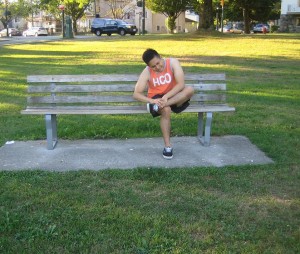The Achilles tendon is considered as the biggest tendon in the body that can support substantial weight. It is situated in the rear of the heel and responsible for connecting the heel bone to the calf muscles. Oftentimes, overuse from extensive running can cause the tendon to become inflamed, thus resulting to Achilles tendinitis.
What are the causes?
It is important to note that Achilles tendinitis can develop for various causes including overuse, climbing stairs, increasing the mileage abruptly, running on hills, sprinting, starting off quickly after a period of inactivity, heel spurs, tight muscles in the calf, incorrect warming up, lack of stretching before exercise, trauma to the tendon, wearing shoes that do not have support and flat arches.

Types of Achilles tendinitis
There are two types of the condition – insertional and non-insertional. When it comes to the non-insertional type, it typically occurs once the center of the tendon tears and ends up inflamed. As for the insertional type, it affects the inferior part of the tendon that connects to the heel. This can occur to any individual, including those who are not physically active.
Symptoms
When the Achilles tendon develops tendinitis, the symptoms include heel pain that worsen during activity, pain in the morning, stiffness of the Achilles tendon, pain after running as well as swelling in the rear part of the heel and reduced range of motion of the foot. If the individual hears a popping sensation in the back of the heel, it indicates a ruptured tendon. If you want to learn more about the condition, read here.
Treatment
Tendinitis of the Achilles tendon typically heals on its own with conservative treatment at home, but it will take some time for the pain to subside. Always bear in mind that the treatment should be started early and it might take up to three months or more for the pain to subside.
The recovery period can take up to six months if the treatment was delayed for several months. Initially, the individual should rest the affected foot and avoid activities that worsen the pain particularly high impact activities such as running. The doctor will recommend low-impact activities such as biking, walking, swimming and elliptical machines. Additionally, you can apply an ice pack over the Achilles tendon for 20 minutes several times in a day to help reduce the swelling and pain. NSAIDs such as ibuprofen can also be given to reduce the pain and swelling.
Prevention
The ideal way to prevent Achilles tendinitis from developing is to steadily increase the intensity of the running routine of the individual. Other measures to take into consideration include wearing appropriate shoes, avoiding activities that worsen the pain and proper stretching before and after running. Additionally, the individual should also try cross-training by alternating running with a low-impact activity in order to reduce the level of stress placed on the Achilles tendon.
